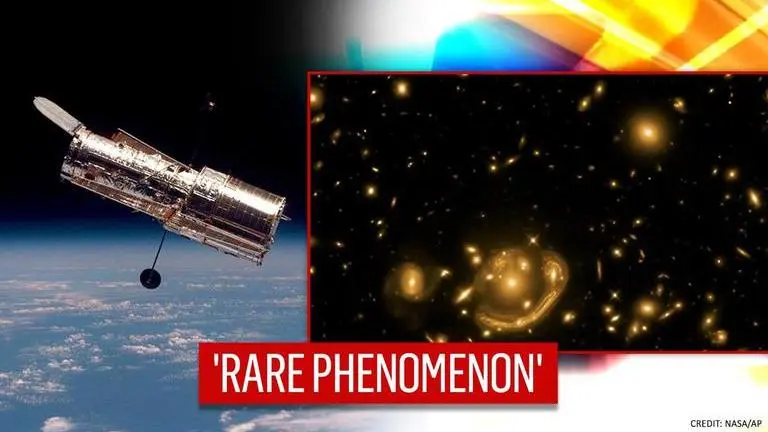Updated 29 December 2020 at 11:22 IST
'Molten ring': NASA's Hubble captures one of the largest Einstein's rings; watch video
In Hubble image, one can see that light emitted from background galaxy was distorted into a curve due to the central elliptical galaxy's gravitational force.
- Science News
- 2 min read

In what NASA termed as “a truly strange and very rare phenomenon”, Hubble Space Telescope captured the GAL-CLUS-022058s, or the largest and one of the most complete Einstein rings called the ‘Molten Ring’ situated in the southern hemisphere constellation of Fornax (the Furnace). Taking to its official Instagram handle, NASA’s Hubble shared the image of one of the unique and rarely witnessed the event in the host constellation that scientists created using the ‘gravitational lensing’, a technique, which according to NASA, causes light shining from far away to be bent and pulled by the gravity of an object between its source and the observer.
“The curving features in this #HubbleFriday image of GAL-CLUS-022058s, nicknamed the ‘Molten Ring’ by astronomers are great examples of gravitational lensing,” NASA wrote in a post on Instagram.
In the stunning image of the Molten rings, one can see that the light emitted from the background galaxy was distorted into the curve due to the central elliptical galaxy cluster’s gravitational force. The image’s end result had magnified the background galaxy and distorted the lights into perfect rings.
The molten rings phenomenon was first theorized to exist by Einstein in his general theory of relativity, according to NASA. The near exact alignment of the background galaxy with the central galaxy dismantled light in the middle of this image as it warped the two creating a unique structure. “Objects like these are the ideal laboratories in which to study galaxies that are often too faint and distant to otherwise see without gravitational lensing,” NASA informed in the release.
Advertisement
The phenomenon explained
As per NASA, the gravitational lensing makes the distant galaxies look largely distorted, stretched, or magnified and makes it difficult to measure, as galaxies clustered in compact structure bends the light enormously. It appears as though, one was looking at the celestial objects via a giant magnifying glass. “When taken to the extreme, gravity can create some intriguing visual effects that Hubble’s is well suited to observing. Einstein’s general theory of relativity describes how mass concentrations distort the space around them,” the space agency explained. It added that a gravitational lens can occur when a huge amount of matter, like a cluster of galaxies, creates a gravitational field that distorts and magnifies the light from distant galaxies that are behind it but in the same line of sight.
Advertisement
Published By : Zaini Majeed
Published On: 29 December 2020 at 11:24 IST
